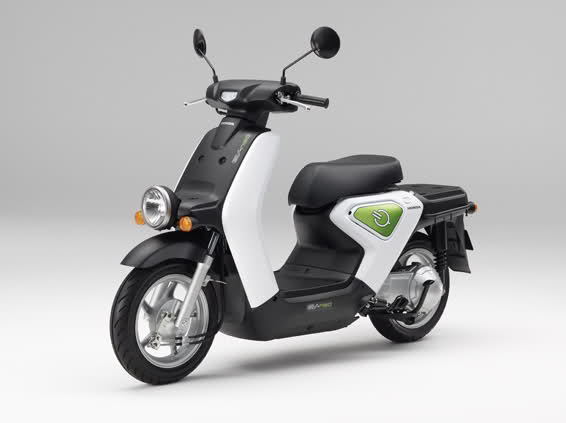
Honda announced in December 2011 the goal of producing an all-electric scooter for Japanese consumers within the next two years. This goal has been achieved with the release of the EV-neo to fleet consumers starting on Christmas Eve. Honda will deliver up to 100 electric scooters to businesses throughout Japan by April 2015. Leaseholders will work with Honda to collect performance data that can improve future generations of the EV-neo. The automaker has been testing ten EV-neos on Japanese streets since October 2010. This press conference also announced the first road tests for the Fit EV featured at the 2011 Los Angeles Auto Show.
Each EV-neo is powered by a Toshiba Super-Charge Ion Battery. This battery can last up to 21 miles per charge at a steady speed of 18 miles per hour. Honda notes that the Super-Charge Ion Battery can be replenished in 30 minutes using an optional quick-charge unit. The standard charging system can recharge the battery from empty in less than four hours. The EV-neo includes a pedestrian alert system that produces a sound at low speeds to attract attention from deaf and hard-of-hearing pedestrians.
Honda will start the standard EV-neo at $5,400 over the life of the lease. This base price increases when the quick-charging kit ($1,425) is added. The EV-neo is also available in the PRO trim ($5,460) with storage space in the front and rear for drivers on the move. Leaseholders may be able to add premium services like maintenance packages, extended warranties and high-performance parts in the future.
The EV-neo represents Honda’s leapfrogging of major competitors in the scooter market. BMW and Mercedes-Benz unveiled electric scooter concepts earlier this year at the Geneva Motor Show. These concepts played with ideas like plugging PDAs into onboard stations to handle steering and propulsion. Honda’s EV-neo may not be as futuristic in terms of accessories but this electric scooter beat the competition to market. The automaker noted that an annual goal of 1,000 leases in Japan could be possible by the first quarter of 2013. This modest goal might be eclipsed in a decade as the EV-neo is sought by city dwellers in Asia, Europe and Africa.


